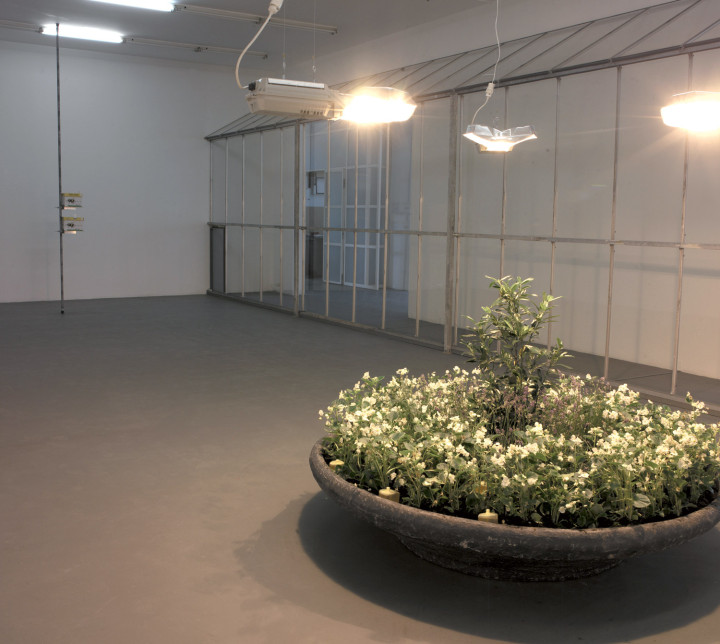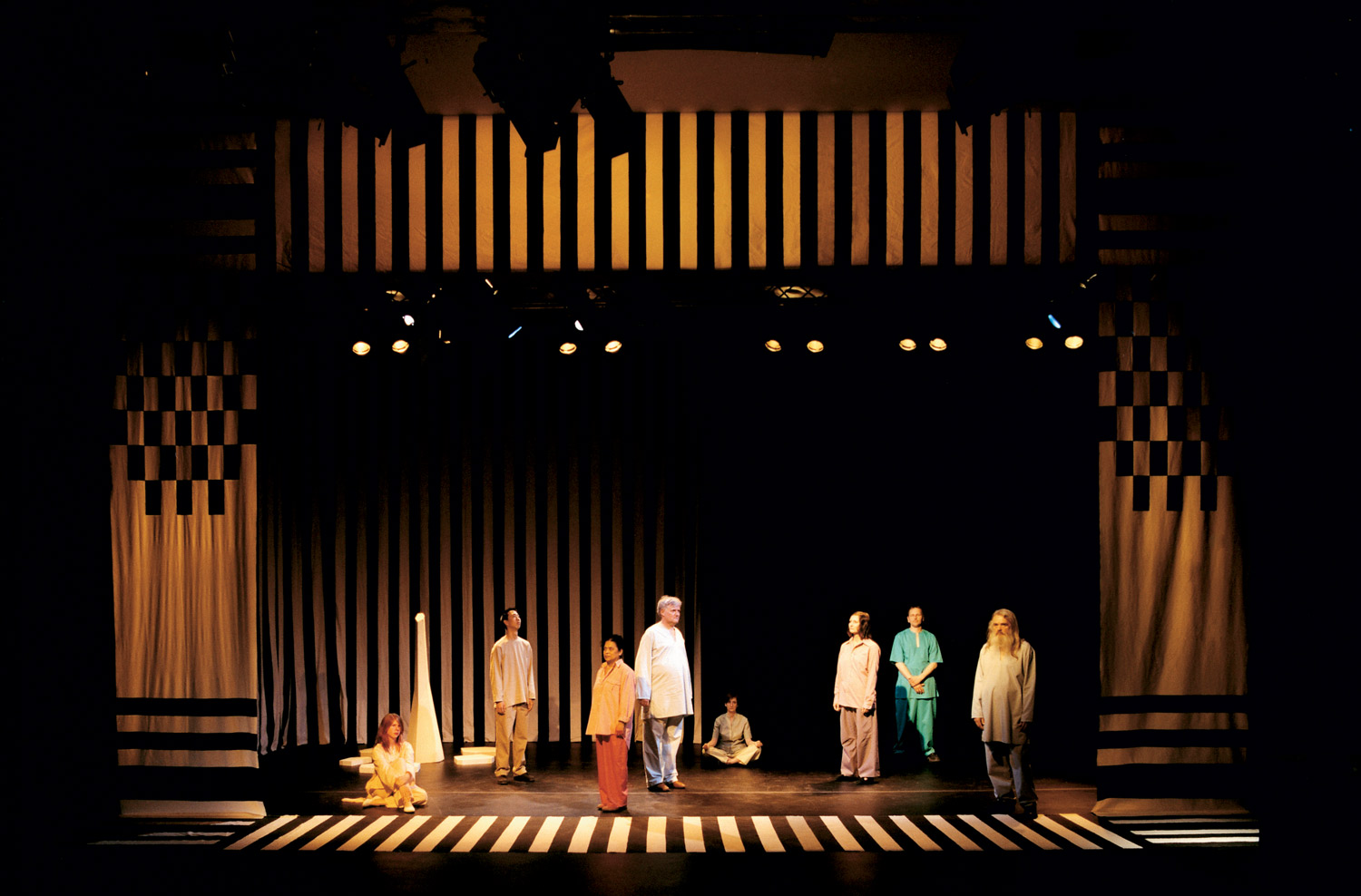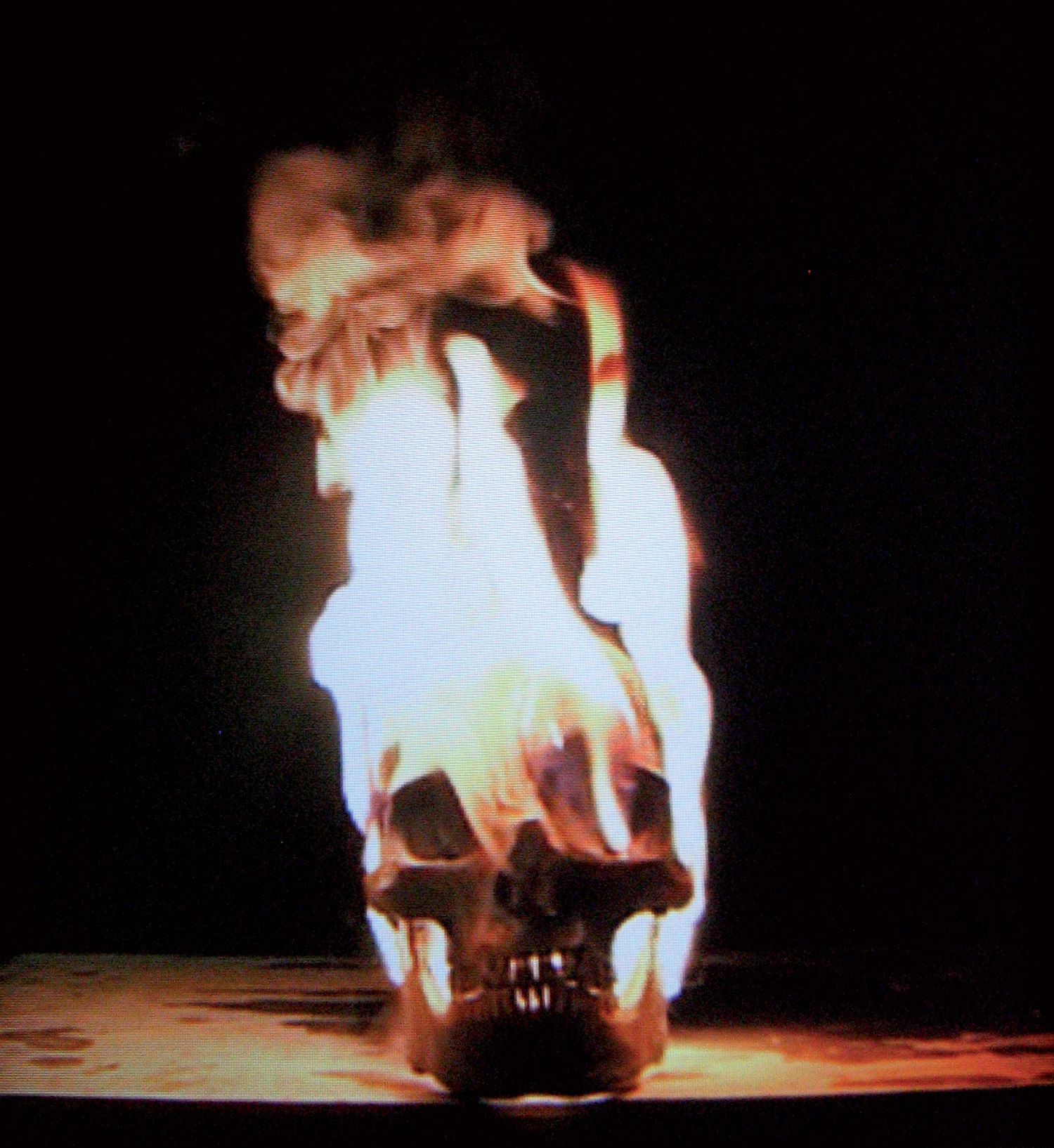
When urban foxes are accidentally attracted to a photo-shoot by slices of sausage, when flies write poetic scores on panes of glass, or quite normal street-lamps do not switch on until someone passes them, then the young Danish artist Tue Greenfort is at work. His work looks at natural and technical cycles with a great deal of critical commitment and an equally large helping of profound humor, with ecological viewpoints at the center of his interest. At the same time, Tue Greenfort ties these complex cycles into the language of modern art — and so a whole variety of operating systems enter into an entirely productive dialogue.
One good example of Tue Greenfort’s work is the sculpture BONAQUA Condensation Cube (2005). At first glance, this work is reminiscent of Hans Haacke’s Condensation Cube (1963-1965); even the title suggests this historical reference. But here Tue Greenfort makes a minimal but far-reaching modification: instead of using slowly condensing water, his cube sculpture is filled with Bonaqua commercial table water, a product from the global player Coca-Cola’s stable. In so doing, the young artist places himself in the Minimal art tradition, but brings it up-to-date by charging it with ecological questions. The differences between “first and second nature,” to use Karl Marx’s terminology, and between genuineness and artificiality, are all available within the closed system of BONAQUA Condensation Cube.
Tue Greenfort’s art constantly relates to his colleagues’ approaches. The American artist Dan Peterman’s recycling art is a case in point. In Producing 1 kilogram of PET PL requires 17.5 kilograms of water and results in air emissions of 40 grams of hydrocarbons… (2004), which alludes to Peterman’s work even in the quantities of material mentioned in the title, Greenfort’s piece features a 1.5-liter mineral water bottle, which has been heated and melted down to offer a capacity of 0.5 liter. This work indicates that producing the throwaway bottle uses far more water than it can contain. Thus the necessity of recycling is presented dramatically. The complex situation in Corner of the Month (2005) is also absurd. Here the artist built a fridge that contains various kinds of yoghurt and an oven. A high, contradictory use of power and a ‘cool’ presentation are thus confronted as part of the aesthetic master plan in Corner of The Month, which incidentally is also the German name of a yoghurt-based product by the brand Müller. Instead of relying on oh-so-brilliant new creations and sensitive formal language, Greenfort invests everything in docking with aesthetics that are already in existence, therefore using them with commitment to addressing reality critically. His art is not based on the individualistic gesture of unique creations, but on a pan-societal, ‘objective’ responsibility that always includes abandoning merely subjective authorship.





